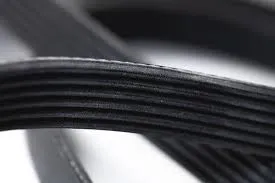- Arabic
- French
- Russian
- Spanish
- Portuguese
- Turkish
- Armenian
- English
- Albanian
- Amharic
- Azerbaijani
- Basque
- Belarusian
- Bengali
- Bosnian
- Bulgarian
- Catalan
- Cebuano
- Corsican
- Croatian
- Czech
- Danish
- Dutch
- Afrikaans
- Esperanto
- Estonian
- Finnish
- Frisian
- Galician
- Georgian
- German
- Greek
- Gujarati
- Haitian Creole
- hausa
- hawaiian
- Hebrew
- Hindi
- Miao
- Hungarian
- Icelandic
- igbo
- Indonesian
- irish
- Italian
- Japanese
- Javanese
- Kannada
- kazakh
- Khmer
- Rwandese
- Korean
- Kurdish
- Kyrgyz
- Lao
- Latin
- Latvian
- Lithuanian
- Luxembourgish
- Macedonian
- Malgashi
- Malay
- Malayalam
- Maltese
- Maori
- Marathi
- Mongolian
- Myanmar
- Nepali
- Norwegian
- Norwegian
- Occitan
- Pashto
- Persian
- Polish
- Punjabi
- Romanian
- Samoan
- Scottish Gaelic
- Serbian
- Sesotho
- Shona
- Sindhi
- Sinhala
- Slovak
- Slovenian
- Somali
- Sundanese
- Swahili
- Swedish
- Tagalog
- Tajik
- Tamil
- Tatar
- Telugu
- Thai
- Turkmen
- Ukrainian
- Urdu
- Uighur
- Uzbek
- Vietnamese
- Welsh
- Bantu
- Yiddish
- Yoruba
- Zulu
Dec . 15, 2024 11:30 Back to list
Durable Serpentine Belts for Heavy-Duty Applications and Optimal Performance
Understanding Heavy-Duty Serpentine Belts A Key Component of Automotive Engineering
When it comes to automotive design and functionality, every component plays a crucial role in the overall performance of a vehicle. Among these components, the serpentine belt stands out as a vital element in the engine compartment, especially for heavy-duty vehicles. The heavy-duty serpentine belt is designed to meet the rigorous demands of trucks, buses, and other vehicles that require high performance under stressful conditions. This article delves into the construction, function, and importance of heavy-duty serpentine belts in modern vehicles.
What is a Serpentine Belt?
A serpentine belt is a long, continuous belt that snakes around various pulleys in an engine. Its design allows it to drive multiple peripheral devices from a single belt, which significantly reduces the complexity and weight of the engine's belt drive system. Typically made from rubber or a synthetic polymer, the serpentine belt is engineered to withstand extreme conditions such as high temperatures, heavy loads, and frequent vibrations.
Heavy-Duty Applications
Heavy-duty vehicles rely on serpentine belts to power crucial components such as the alternator, power steering pump, water pump, and air conditioning compressor. These vehicles often operate under continuous load and require a robust system that can handle the demands of frequent starts, stops, and heavy towing or hauling. The heavy-duty serpentine belt is specifically designed with reinforced materials to improve durability and longevity, ensuring reliable performance even under strenuous conditions.
Features of Heavy-Duty Serpentine Belts
1. Material Composition Heavy-duty serpentine belts are often made with high-strength polyester cords, which provide exceptional tensile strength and resistance to stretching. Enhanced rubber compounds are used to resist wear and degradation due to heat, oil, and contaminants.
2. Ribbed Design The ribbed surface of a serpentine belt provides better traction against the pulleys, reducing slippage and improving efficiency. This design allows the belt to maintain a positive grip on various pulleys, ensuring optimal performance of driven accessories.
heavy duty serpentine belt

4. Tensioning Systems Many heavy-duty applications employ automatic tensioners to maintain proper tension on the serpentine belt. This feature ensures that the belt remains tight enough to prevent slippage while allowing for slight adjustments as the belt wears over time.
Importance of Regular Maintenance
Despite their robust design, heavy-duty serpentine belts are not impervious to wear and tear. Regular maintenance and inspections are crucial to ensure their longevity and efficacy. Here are a few maintenance tips
- Visual Inspections Regularly inspect the belt for signs of wear, such as cracking, fraying, or glazing. Look for any loss of tension or misalignment issues with the pulleys. - Tension Checks Verify that the tensioner is functioning properly. A belt that is too loose will lead to slippage and potentially damage the accessories it drives.
- Replacement Most manufacturers recommend replacing the serpentine belt every 60,000 to 100,000 miles, though heavy-duty applications may require more frequent changes depending on the vehicle's usage.
Conclusion
The heavy-duty serpentine belt is an integral part of the automotive industry, providing essential functions for vehicle operation. Understanding its importance helps vehicle owners and mechanics appreciate the complexity and durability required of this component. When properly maintained, heavy-duty serpentine belts ensure that vehicles operate efficiently, smoothly, and safely, regardless of the demands placed upon them. As technology continues to evolve, so too will the design and materials used in serpentine belts, leading to even greater performance and reliability for heavy-duty vehicles on the road.
-
Korean Auto Parts Timing Belt 24312-37500 For Hyundai/Kia
NewsMar.07,2025
-
7PK2300 90916-T2024 RIBBED BELT POLY V BELT PK BELT
NewsMar.07,2025
-
Chinese Auto Belt Factory 310-2M-22 For BMW/Mercedes-Benz
NewsMar.07,2025
-
Chinese Auto Belt Factory 310-2M-22 For BMW/Mercedes-Benz
NewsMar.07,2025
-
90916-02660 PK Belt 6PK1680 For Toyota
NewsMar.07,2025
-
drive belt serpentine belt
NewsMar.07,2025

